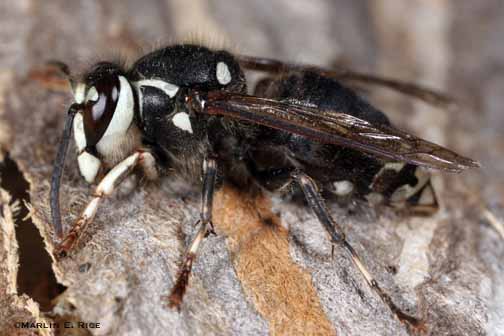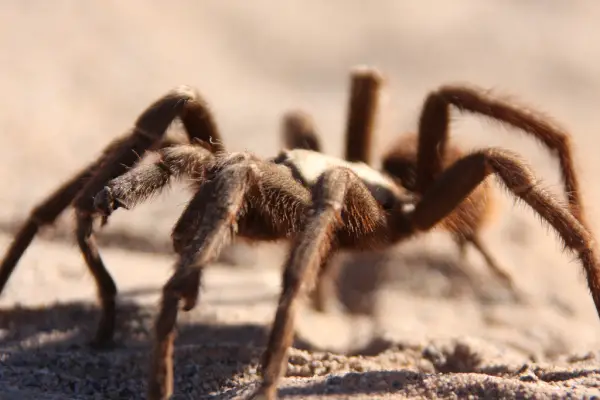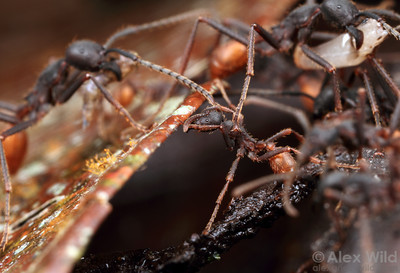Category: Arthropods/ Insects
Arthropods are invertebrates which have paired jointed legs, exoskeleton and segmented bodies.
Insects are invertebrates that have a body divided into three parts (head, thorax and abdomen). They have six jointed legs and live on land and in water.
-
Tiger Swallowtail Butterfly Facts | Anatomy, Diet, Habitat, Lifecycle
The tiger Swallowtail (Papilio glaucus) or the eastern tiger swallowtail is a well-known butterfly species in the eastern United States reaching all the way toward Canada and southern Ontario. They have got a brilliant display of yellow stripes on its wings. Southern butterfly is larger than the northern species. Tiger Swallowtail Butterfly Facts Anatomy The…
Written by
-
Fire Ants Facts | Appearance, Behavior, Diet, Reproduction
The Fire ant is a collective name given to the New World ant species that belongs to the genus Solenopsis. There are 200 recognized ant species and they are also called ‘tropical fire ants’ or simply ‘red ants. These reddish brown ants are notable for their extremely aggressive nature. We speak of the fire ants’…
Written by
-
Blue Morpho Butterfly Facts | Diet, Habitat, Behavior, Lifecycle
The blue morpho butterfly (morpho) is one of the nestropical subspecies of butterfly that occur in the Central America, Mexico, and South America. It truly lives up to its name as the color of its wings is primarily blue with some shades of green metallic. In a bright sunny day, they give a stunning look…
Written by
-
Tarantula Hawk Facts | Anatomy, Diet, Habitat, Behavior
A tarantula hawk (pepsis formosa) is a spider wasp that typically preys on tarantulas. It is the insect of New Mexico that belongs to the members of spider wasp family. The tarantula hawk is the largest Central American spider wasp, reaching a length of about 3 inches with a wingspan measuring up to 100 mm.…
Written by
-
Africanized Honey Bee Facts | Anatomy, Diet, Habitat, Behavior
The Africanized honey bee (Apis mellifera) is a subspecies of a western honeybee which is primarily found in the sub-Saharan Africa. Africa alone is home to 10 subspecies of honeybees all of which are called African honey bees. They are also called killer bees. Back in 1950s authorities made an effort to increase the population…
Written by
-
Bald Faced Hornet Facts | Anatomy, Diet, Habitat, Behavior
The bald faced hornet (Dolichovespula maculate) is a yellowjacket hornet and is found in the Southern Canada and North America. The hornet earns its name due to ivory-white markings on its face. It is thought to defend its nest quite aggressively against potential predators. It is not a true hornet. The bald faced hornet is…
Written by
-
Tarantula Facts For Kids | Anatomy, Diet, Habitat, Behavior
The tarantula is a group of hairy arachnids belongs to the family Theraphosidae. Scientists have identified 900 spider species to date. Tarantulas are not thought to be venomous to humans in fact that some species make popular exotic pets. Tarantula Facts For Kids Anatomy Tarantulas are varied in sizes—from the largest tarantula nearly the size of…
Written by
-
Bullet Ant Facts | Anatomy, Diet, Habitat, Behavior
The bullet ant (Paraponera clavata) is the world’s largest ant and it possesses powerful venomous sting. Conga ant and the lesser giant hunting ant are other common names given to this ant species. They are found from Nicaragua to as far as Paraguay. Bullet ant is the only member of its genus Paraponera. Bullet Ant…
Written by
-
Crab Spider Facts | Anatomy, Diet, Habitat, Distribution
The crab spider (Misumena vatia) is the largest flower spider in the North America. It is commonly found in flowers and shrubs. They are one of the species that do not make webs. Crab spiders are also known as goldenrod crab spider or simply flower spider. Crab Spider Facts Anatomy Crab spiders are going to…
Written by
-
Spiny Lobster Facts | Anatomy, Diet, Habitat
Spiny lobsters are one of the coastal marine animals that are found in the Pacific southwest to as far as Baja California, Mexico. It is a valuable commercial fishery and in the late 1970’s the fishery business touched its highest point. As it turns out spiny lobsters are less likely to be found in rocky…
Written by
-
Army Ants Facts | Anatomy, Diet, Habitat, Behavior
The army ant (marabunta) is a collective name applied to more than 200 ant species. Army ants are mainly found in the tropical and temperate regions throughout the North and South America as well as Asia, Australia, and Africa. They are one of the minibeasts that have thrived on our planet for millions of years.…
Written by
-
Brown Recluse Spider Facts | Anatomy, Diet, Habitat, Behavior
The brown recluse spider (Loxosceles reclusa) is a venomous spider reaching a length of 6 to 20 mm. The color is dark brown to medium and is also known as violin spider. There is a slight difference in color between the abdomen and cephalothorax. Although the bite is venomous brown recluse spiders are nearly harmless…
Written by
-
Brown Widow Spider Facts | Anatomy, Diet, Habitat, Behavior
The brown widow spider (Latrodectus geometricus) is thought to occur in Southern California during the last ten years or so. It continues to expand its territory and is likely to move toward the central California in distant future. The spider is also known as house button spider, grey widow spider, and brown black spider. Brown…
Written by
-
Japanese Spider Crab Facts | Anatomy, Diet, Behavior Habitat
The Japanese spider crab (Macrocheira kaempferi) is the largest of all crustaceans. It occurs on muddy or sandy bottoms in water to a depth of 30 – 50 m (100 – 160 ft). The crab is thought to feed on echinoderms, molluscs, crustaceans, and worms. It is also known as takaashigani means ‘tall leg’. Japanese…
Written by
-
What Do Ladybirds Eat | Ladybugs Feeding Behavior and Diet
Ladybirds (Coccinellidae) are small beetles recognized by their bright orange scarlet with prominent black spots on it. Unlike beetles ladybirds are thought to be extremely useful for they usually eat scale insects which are pests in agricultural lands. However this is not the reason these beetles feed on insects. Let us find out what do…
Written by















